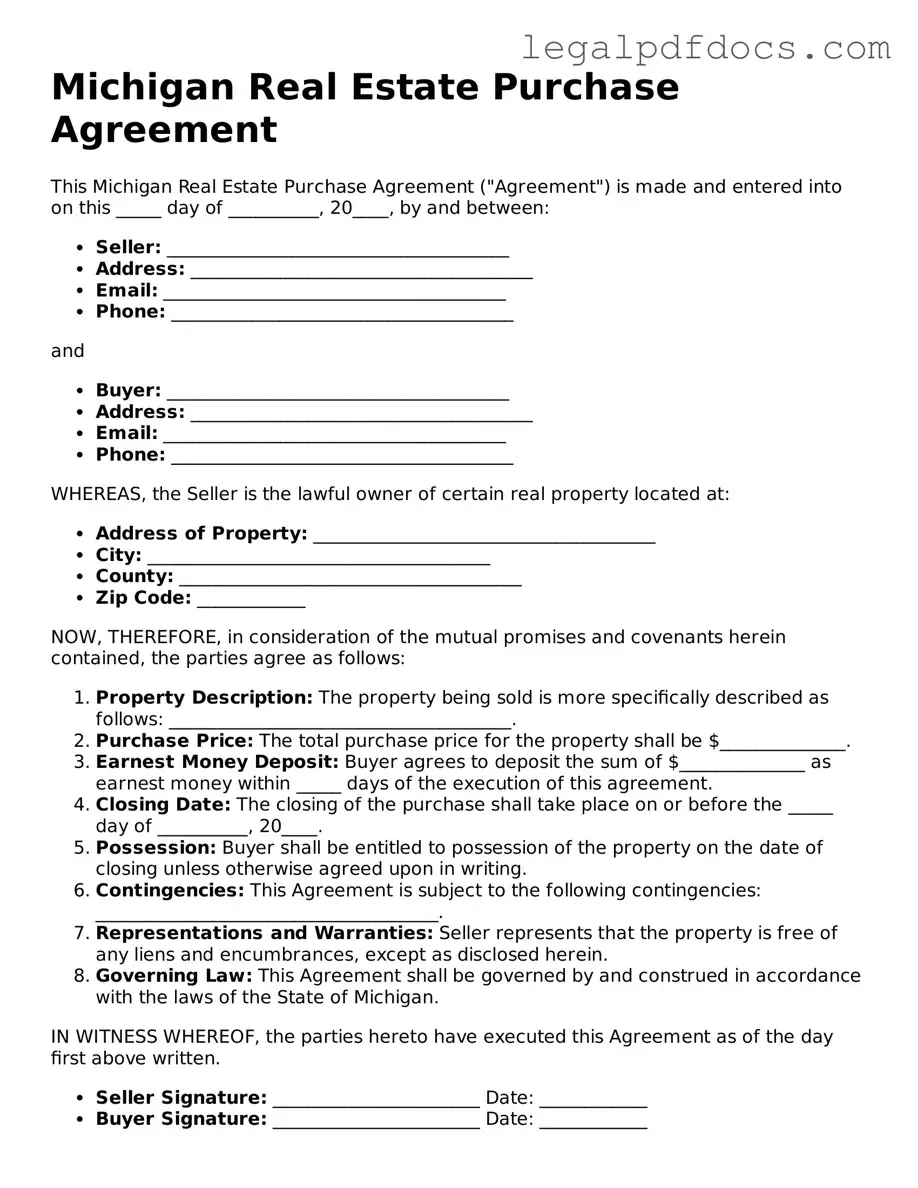Official Real Estate Purchase Agreement Form for Michigan
The Michigan Real Estate Purchase Agreement is a legal document that outlines the terms and conditions under which a buyer agrees to purchase property from a seller. This form serves as a binding contract, ensuring both parties understand their rights and obligations throughout the transaction process. To get started on your real estate journey, fill out the form by clicking the button below.
Open Real Estate Purchase Agreement Editor Here
